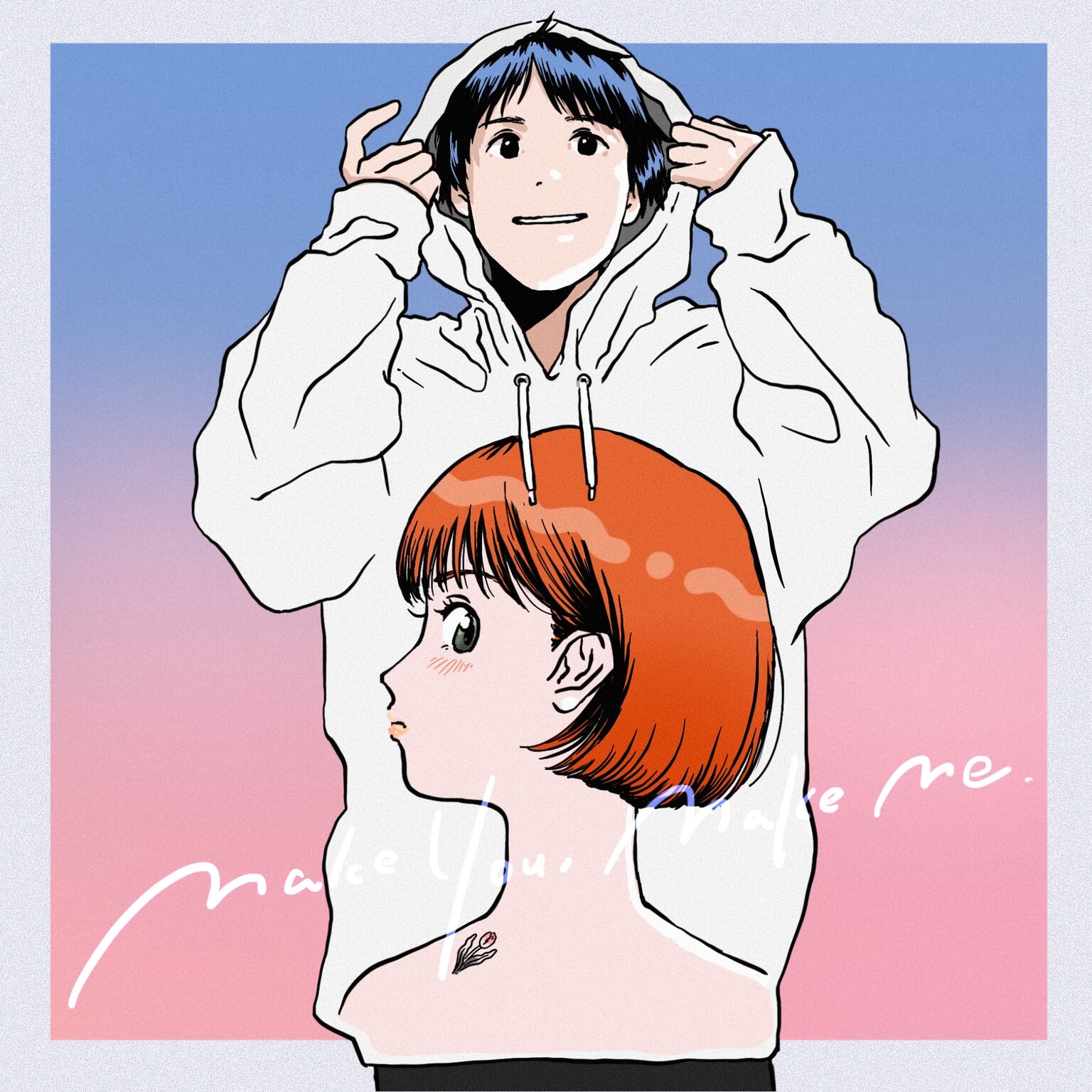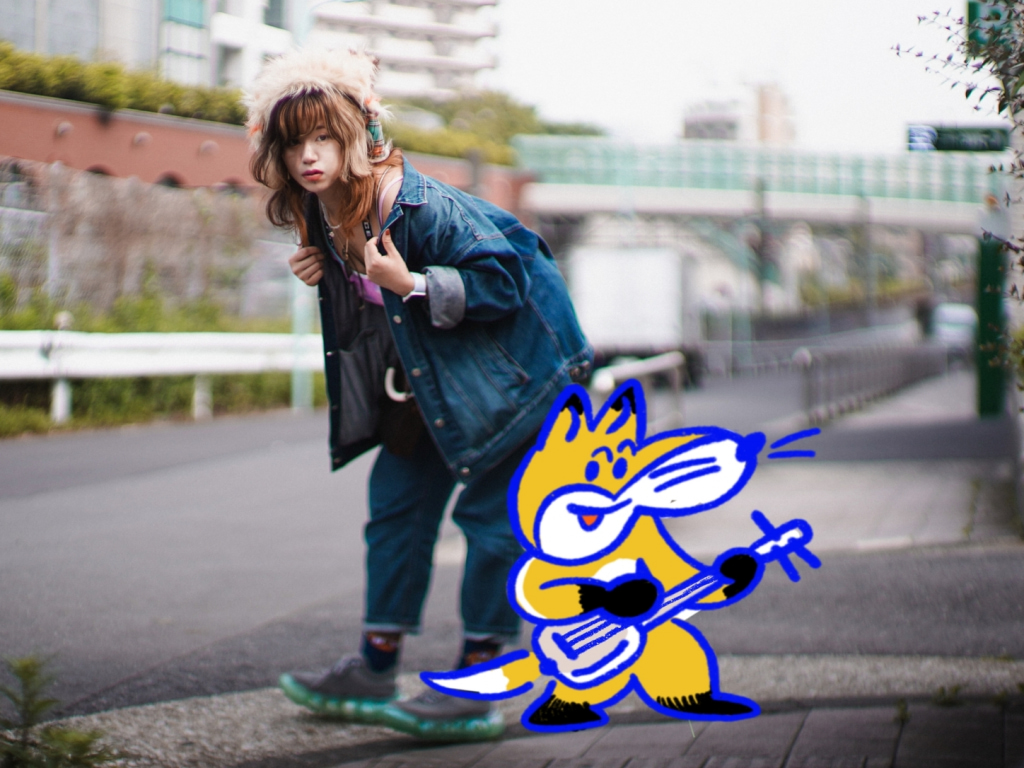Tokyo Weekender and More Than Music collaborate in a monthly interview series with the diverse musical performers on the Tokyo music scene. For this interview, we caught up with Chili Girl who is playing at the Akahanasai Christmas Market on December 18.
Chili Girl (stylized as CHiLi GiRL) is a new pop project mixing traditional shamisen with pop music by Shinobu Kawashima — a shamisen player, traditional performing artist and singer-songwriter. Kawashima is an outstanding musician who won first place in the national Tsugaru Shamisen championship four times before enrolling at Tokyo University of the Arts. Kawashima’s track “Hana Chidori” was used as the theme song for the TV drama Wafu Sohonke and became an instant hit, catapulting her into the pop music scene. With Chili Girl, Kawashima keeps on pushing the boundaries by being her “spicy and charming” self.

“Make You, Make Me” – artwork for the new single by CHiLi GiRL
What is the story behind the name “Chili Girl”?
Somehow all the artists I love have the initial C in their name, like the Japanese Shibuya-kei band Cymbals. I love their music and I also love the Swedish band, The Cardigans and their song “Carnival”. Also recently I’ve been loving the Carpenters. There are a lot of great bands associated with the initial C, and these bands are a big inspiration to me so I wanted to go with something that started with “C.” When I was coming up with the name, I struck on the spice “chili”.
In Japanese, the term “chiri” (how “chili” is pronounced) has another meaning too. The shamisen doesn’t have the do-re-mi musical scale but rather a musical scale that verbalizes the sound the shamisen makes. In the shamisen’s verbal musical scale there is a sound called “chiri”, which is a sound that is made by holding down the strings of the shamisen and strumming. So, the “Chili” from “Chili Girl” has a double meaning.
How would you describe your music in one word or phrase?
I would describe my music as “spicy and charming.” Though Chili Girl is my very own solo project it’s also where I get to collaborate and work with various talented musicians too. By adding different interpretations, Chili Girl is ever-changing and not just a cute or cool or one-sided genre. The artists and musicians I work with always add a little spice to my music and make something entirely new which I love because I enjoy being inspired.
How did you start playing the shamisen?
I started playing the shamisen when I was three. My parents didn’t play the instrument and the first time I encountered it was during a summer festival in my town and I fell in love with it. I started going to shamisen lessons right after. I was gifted a high-quality shamisen from my grandparents during my elementary school years and I have been using it ever since, for 25 years now.
The shamisen can be separated into three parts: the neck, the middle neck and the body. When I was younger, I took out a portion of the middle neck section to adjust to my build at the time. As I grew older, I put back portions of the neck to the instrument to its full size which I use as an adult.
What is your songwriting process like?
I think a majority of singer-songwriters put down their feelings on paper and write songs, but I may be a bit different. I put the utmost importance on how I felt during a certain experience or time with the five senses. Like how warm the light of the sun felt on my skin or the sensation of an embrace with another person. Whether it be a sexual feeling or how the temperature felt on my skin. What was the view and the air like at the same time? All aspects are important to me.
The lyrics come to me first before the music. The reason is that most traditional Japanese folk songs are made this way. The music and melody are influenced and shaped by the lyrics. A traditional Japanese tanka poem has 5, 7, 5, 7 and 7 syllables and Japanese folk songs are similar as they have 5, 5, 7, 7, 7, 7, 7, 5 words per line. This rhythm creates the comforting sound that many Japanese people like listening to.
What’s interesting about Japanese folk songs is that throughout the whole song, it would go with the same rhythm. When I share the scores of my song with my bandmates, I have to put down the lyrics so they would be able to know which part of the song we are playing.
What else is special about traditional Japanese folk songs?
Traditional performance arts are really minor compared to mainstream music. There are not many young Japanese people who would watch a live traditional performance. But there’s always someone who likes and listens to this kind of music, regardless of age.
Music is like fashion. People who want to wear trendy clothes, wear the latest looks. But I have my own personal style that I value more than trends. For my songs, I mix in some of the trends with the colors and shapes that fit me. I really think tradition may change in looks and appearance, but it is always inherited in one shape or another. Rather than trends, I’d rather try to be in the hearts of those who love traditional sounds. I hope my music, like traditions, can be loved by a lot of people for a long time.
If you weren’t doing music, what would you be doing?
I would be a designer or an architect. I would want to do something that only I can do and create.
Dream musical artist, dead or alive, to have a meal and drink with?
Maki Nomiya.
What projects do you have coming up and where can we see you next?
I am currently creating an art book. It’s a love letter to my fans and all of the musicians and artists who I’ve worked with. On December 25, I will be having a single release event. Next year, I will also be touring throughout Japan and internationally as well.
Check out Chili Girl and her upcoming music on Instagram.
TW readers get a 10% discount on any MTM ticket by entering the code “TKYWD” at check-out. The same code gets you a 50% discount on the first month of the membership fee as a trial. Sign up for membership.









